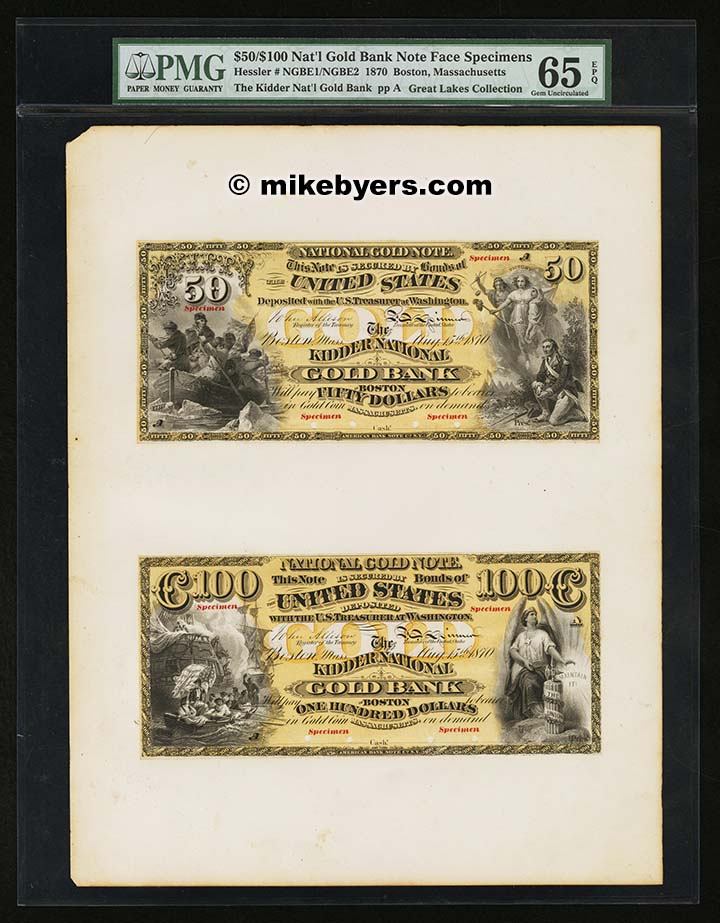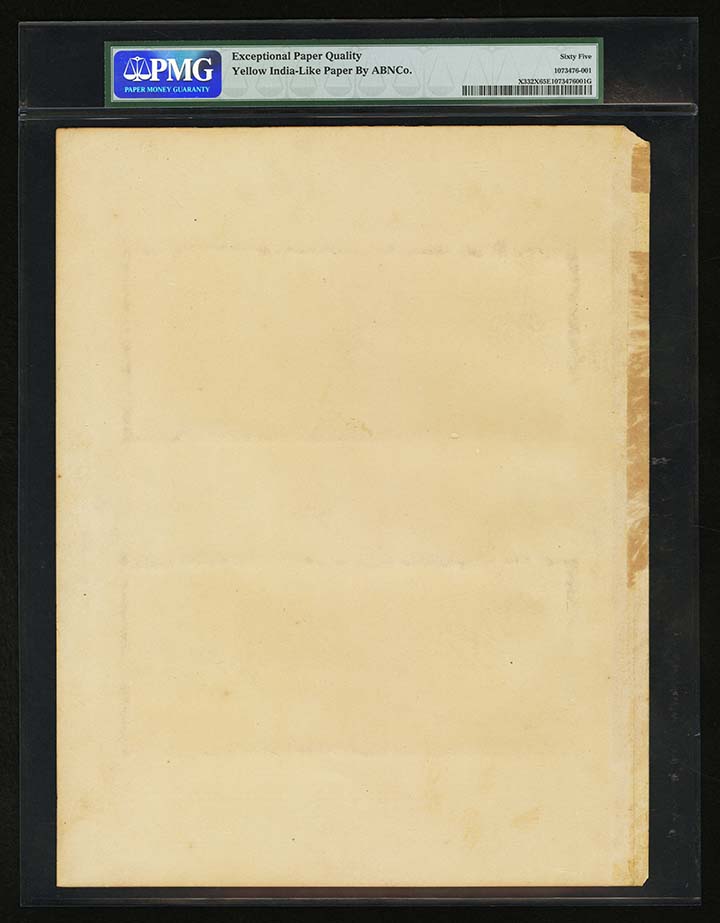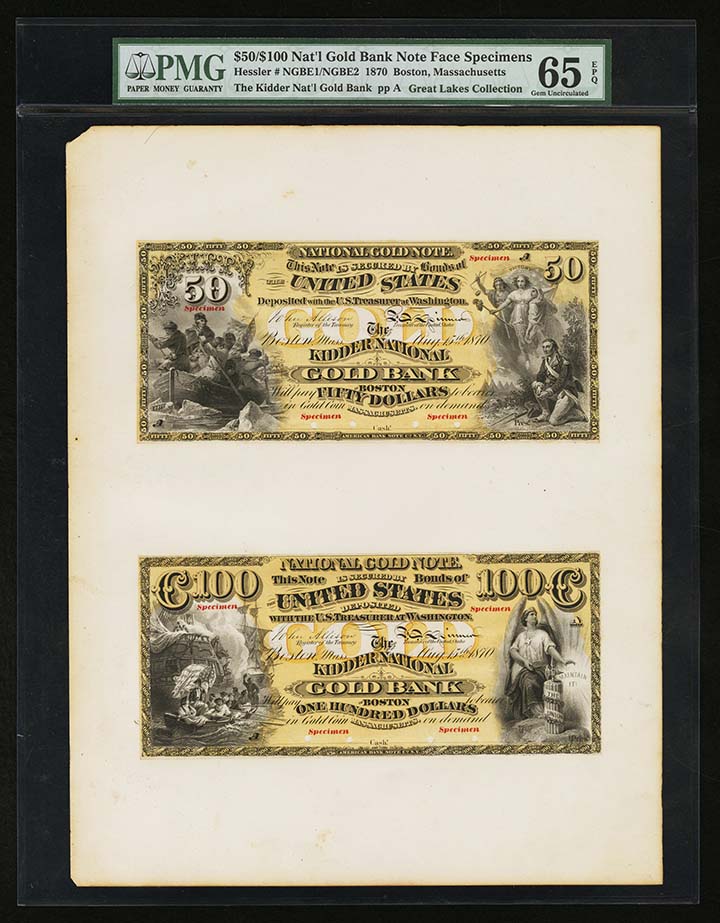$50 and $100 Kidder National Gold Bank Specimens
Hessler # NGBE1 / NGBE2
1870 Boston, Massachusetts
PMG Gem Uncirculated 65 EPQ
SOLD


The Kidder National Gold Bank was the first National Gold Bank chartered and was the only one located outside of California. The organizers had second thoughts about the economics associated with operating such a bank in the Northeast, where a National Gold Bank was not needed to secure the circulation of Federal paper money. The bank had a short life. It was organized in August 1870, received its circulation the following March and April, and returned its entire circulation in December 1871. It then liquidated on November 8, 1872. Not a single Kidder National Gold Bank Note entered circulation, although at least one sheet was cut. A more detailed study of the bank's issues includes the following: The bank deposited $50,000 in bonds on August 15, 1870 to secure its circulation. This was followed by another $100,000 bond deposit on November 5, 1870. The first shipment of notes for the bank was sent on March 11, 1871. It consisted of 50 sheets of the $50-$100 combination. A further 75 sheets of the $50-$100 combination were mailed on April 8. All of these notes were returned to the Comptroller of the Currency on December 4, 1871. The bonds backing this paper money were all sold within two weeks. Within the year the bank would exit completely from the scene except for a few specimens of its paper money. A $50 and $100 specimen pair resided in the John J. Ford Collection until it was sold in 2004. The only other specimen pair known is presented here. They are uniface specimens with four small punch cancels each along the signature lines. They are mounted to the same card and then enclosed in a PMG multi-note holder. Each "note" is marked "SPECIMEN" four times in red ink. The paper for the specimens has a gold tint. This is a great item that is one of the highlights of this auction and destined for the finest of collections.





